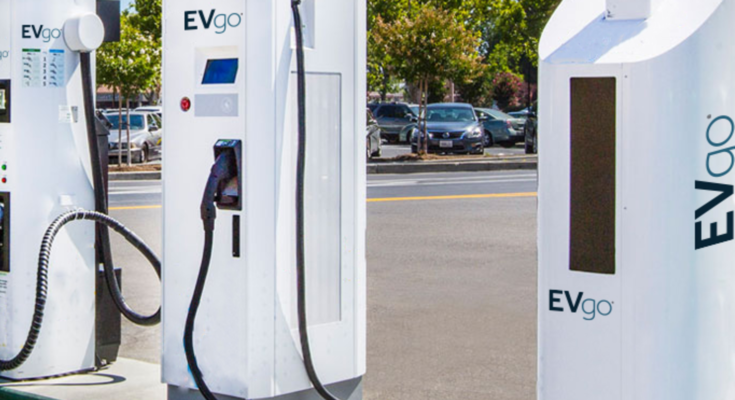Read The Full Article On: Edition
The electric revolution in transportation is as significant as the switch from the horse and buggy to the Model T. In the not-too-distant future — some project as soon as 2030 — the majority of new cars on the road will be electric. But it has taken a while to get to this point. Electric cars actually predate the internal combustion engine, and have been around since before the US Civil War. Compared to the speed at which we’ve seen other technologies advance — it took less than 25 years to go from the first cell phone prototype to the iPhone — it can seem puzzling as to why this technology has moved at such a glacial pace. Today, owning a Tesla or another electric vehicle is still a privilege of the elite — or at least the upper middle class — and we’re still largely reliant on fossil fuels in cars, despite knowing for years that this is harmful to the environment and our future. So what is holding us back? It all comes down to the battery. It seems absurd, but the truth is the same humble carbon and metal oxide-based lithium-ion battery (commonly referred to as Basic Lithium-ion) that powered your Razr cell phone in 2004 is essentially the same thing powering every electric vehicle on the road today. Cars just use more of them. And to add to the absurdity, the chemistry inside of that lithium-ion battery hasn’t really changed since Sony introduced it commercially in 1991. Scientists and engineers have worked hard to try to make batteries more powerful, but the industry is now hitting the theoretical limits of battery chemistry. After over 20 years of those approaches making substantial progress, the last five years have delivered only 1% to 2% performance improvements every few years. I faced this problem firsthand while working at Tesla on the first Roadster battery, and it’s the reason why Gleb Yushin, Alex Jacobs and I founded Sila Nanotechnologies. Combined, we have spent 40 years researching, testing and building new battery technologies, and we have found that the best, fastest path to improve capacity and bring down costs for the scale we need today is Advanced Lithium-ion batteries.While breakthroughs in energy storage technologies like solid state batteries, graphene supercapacitors and hydrogen fuel cells occur regularly, these technologies have underlying complications that come with them. Commonly, these are experiments that are only proven in a tightly controlled lab setting, and not in the real world, where variables such as temperature and product usage can be unpredictable (and therefore lead to unpredictable results). It often takes 10 years to bring a lab breakthrough to market, and almost all fall short along the way; the few that do get there underperform. For example, the promise of hydrogen fuel 15 years ago still has yet to come to fruition. But even if these technologies are perfected, the reality is we need better energy storage now, and the infrastructure doesn’t exist to bring these miracle technologies to consumers at scale because they’re still so new and require entirely new methods of mass production. In the meantime, the infrastructure for Basic Lithium-ion factories already exists globally, and are capable of producing 285 Gigawatt hours worth of power today. This investment is growing exponentially, with an estimated 68 battery “megafactories” slated to be built, which will add another 1.45 Terawatt hours of capacity by 2028. Advanced Lithium-ion materials can be incorporated into these factories almost immediately, with no costly changes or delays for the manufacturers — from their standpoint, it’s a simple matter of swapping one black powder in the production line for another.This brings us back to the core problem: How do you improve on a battery chemistry that has already hit its theoretical limits? Basic Lithium-ion batteries rely on graphite to store lithium when charged, but silicon has long been known to have significantly greater capacity for lithium storage and can be implemented in the same factories that today make Basic Lithium-ion. However, silicon hasn’t been practical to implement because the particles will swell in size as the battery charges and discharges energy, ultimately breaking the battery after only a few charging cycles.
One solution to this problem, in simple terms, is to put a “case” around silicon composite particles to keep the swelling in check. Sila Nano has achieved this through eight years and 35,000 iterations of its materials, and have so far proven a 20% increase in battery capacity today. The theoretical limits of silicon mean these kinds of silicon-based materials could be capable of up to 40% improvement.But what does this 40% improvement actually mean? Today, electric vehicle batteries cost about $176 per kilowatt-hour, which translates to about one-third of the price of the entire car. For example, even the more affordable Chevrolet Bolt EV has a 60 kilowatt-hour battery pack, meaning more than $10,500 of the roughly $37,500 price tag is just the hard cost of the battery.With energy density improvements, we could shrink the size and price of the battery proportionally while still achieving the same power, range and performance. Continued advancements will unlock even greater potential and help eliminate these tradeoffs entirely.Today the typical electric vehicle has a range of just 200 miles and a 100,000 mile warranty. Imagine a world where we have a 500 mile range, and a million mile warranty. This isn’t a dream about just having more convenience and features, it’s about finally achieving the electrified automotive future that we’ve been promised — one that is better for our planet. While it will still take several years before automakers can fully implement the latest advancements, leaders like BMW and Daimler are already on board, so it’s just a matter of time.

